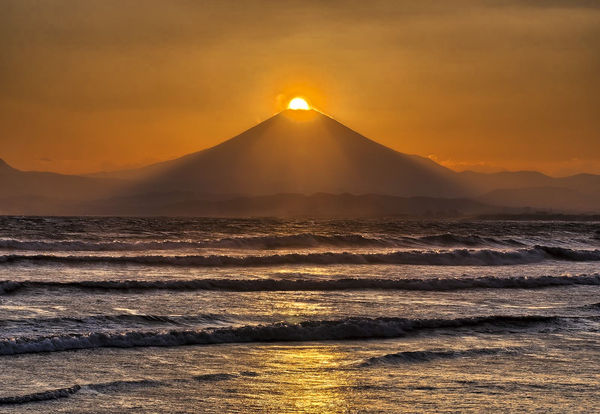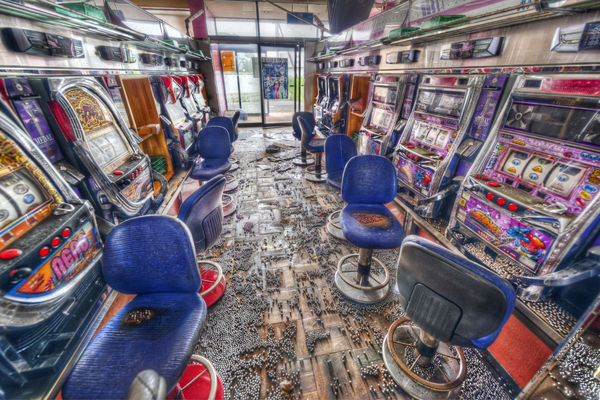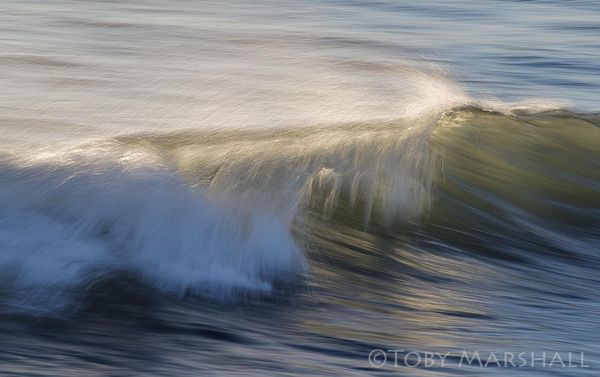Dynamic Range
Jan 26, 2016 18:00:09 #
You nailed it right. The farther away from the computer the wider the dynamic range.
Jan 26, 2016 18:20:18 #
Bull-Dozer wrote:
Thinking about the dynamic range of modern sensors... (show quote)
So lets consider some examples for a few cameras.
Camera Max. Saturation Capacity Electrons
Canon 1D MIV 47756
Canon 1DX 90101
Canon 5D MIII 70635
Canon 7D MII 29544
Nikon D3300 35989
Nikon D3s 84203
Nikon D4 118339
Nikon D4s 128489
Nikon D610 74971
Nikon D750 81608
Nikon D800 48818
Nikon D810 78083
Hi quality sensors with a full well capacity greater than 32,768 electrons are not unusual.
Jan 26, 2016 18:37:16 #
As I understand 'dynamic range' it is the ability of the sensor to record the presence of light that exceeds the nominally human visible wave lengths. Generally, wave lengths in the 400 to 700 nanometer range. It is reported that some people claim to see down to 380 and somewhat less and up to 720 and somewhat more. Is this wrong :?:
Jan 26, 2016 19:12:26 #
Mark7829 wrote:
Bracketing is HDR....
Mark, with all due respect, bracketing, in and of itself, is not HDR. The do HDR, yes you definately have to bracket.
I have bracketed for years and not done HDR. 90% of my bracketing today, is NOT intended to ever be HDR. It could be but its not.
When I hear someone talking about bracketing, to me, HDR does not even come to mind, but maybe because that's not what I call it or have ever heard it called. maybe just me but I certainly see them as completely separate and individual process with separate names.
Not saying you're wrong, it could just be me!! ;-)
SS
Jan 26, 2016 19:44:20 #
dhellner
Loc: milwaukee wi.
kymarto wrote:
Rockwell is dead wrong, in my experience. That's l... (show quote)
:thumbup: :thumbup: :thumbup:
Jan 26, 2016 20:06:28 #
SharpShooter wrote:
... bracketing, in and of itself, is not HDR. ... Not saying you're wrong, it could just be me!! ...
No, you are correct. Bracketing predates HR and digital imaging by decades. I would venture to say that most of us that bracket have not intention to use HDR.
When we resort to bracketing we are more likely are doing it because we recognize that we cannot always trust our meters or even our own judgement. They are not infallible. It is a prudent measure to insure that at least one of the images is closest to the optimal exposure.
Jan 26, 2016 20:10:42 #
kymarto wrote:
Rockwell is dead wrong, in my experience. That's like saying that an old VW beetle is as good as a Ferrari Testrosa, because both can cruise at 60 mph on a straightaway. Let the road be a bit more challenging, and you will immediately feel the difference.
.../...
Rockwell says that a good photographer will adjust his camera to the dynamic range of the scene.
.../...
Rockwell says that a good photographer will adjust his camera to the dynamic range of the scene.
I said the guy was useful, not right. Maybe he copied his definition from Wiki; that was the only part I was referring to. What else do you expect from someone who says that "P" mode means Professional? You're right; I should have quoted his definition. I would not be troubled by putting a note under the remainder of the quotation to the effect that the remainder of the article was BS.
Jan 26, 2016 20:17:30 #
John_F wrote:
As I understand 'dynamic range' it is the ability of the sensor to record the presence of light that exceeds the nominally human visible wave lengths. Generally, wave lengths in the 400 to 700 nanometer range. It is reported that some people claim to see down to 380 and somewhat less and up to 720 and somewhat more. Is this wrong :?:
Actually DR refers to the range of light intensities that the sensor can record without introducing a certain level of noise. Low light intensities tend to be compromised because the sensor itself introduces various types of noise, and as the signal gets weaker (less light) at a certain point the inherent noise in the sensor overwhelms it.
I think what you are referring to is "color depth"--not what exceeds human vision, but what chrominance values can be recorded, again as compared to how much noise is present at those values.
Jan 26, 2016 20:30:15 #
[quote=SharpShooter]
Yes and no. You are preaching to the choir about HDR--it has been my main focus in photography for a number of years and I think I've gotten pretty good at it. And indeed when you run out of DR, HDR is the only way to go. But there is a fly in the ointment, which is movement. Even with Photomatix's "selective deghosting", which has saved many a shot for me, subject movement tends to limit what you can do with HDR.
I have been amazed shooting with the D800 at how many shots I can cook up well from a single RAW frame that formerly would have required HDR. Of course there is always going to be the shot that won't work from a single frame, but having a couple of extra stops of DR has dramatically extended what I can do with action shots.
Mark7829 wrote:
"you have to decide what to sacrifice--you ca... (show quote)
Yes and no. You are preaching to the choir about HDR--it has been my main focus in photography for a number of years and I think I've gotten pretty good at it. And indeed when you run out of DR, HDR is the only way to go. But there is a fly in the ointment, which is movement. Even with Photomatix's "selective deghosting", which has saved many a shot for me, subject movement tends to limit what you can do with HDR.
I have been amazed shooting with the D800 at how many shots I can cook up well from a single RAW frame that formerly would have required HDR. Of course there is always going to be the shot that won't work from a single frame, but having a couple of extra stops of DR has dramatically extended what I can do with action shots.
This formerly would have required HDR

(Download)
Of course no choice here but HDR

(Download)
An abandoned game parlor in Fukushima. Even with the D800 I needed +-7 EV brackets

(Download)
This would not have worked as HDR, but DR saved the day :)

(Download)
Jan 26, 2016 22:50:56 #
Apaflo wrote:
So lets consider some examples for a few cameras. ... (show quote)
The numbers you refer to represent one end of the dynamic range, the high end or saturation , the low end is related to the lowest usable value which is related to the noise level. For example when the RMS noise is equal to the average signal. Or perhaps when SNR=3 dB. The ratio of saturation to lowest usable is the dynamic range. Either number by itself is only part of the story
Jan 27, 2016 00:42:39 #
Trabor wrote:
The numbers you refer to represent one end of the dynamic range, the high end or saturation , the low end is related to the lowest usable value which is related to the noise level. For example when the RMS noise is equal to the average signal. Or perhaps when SNR=3 dB. The ratio of saturation to lowest usable is the dynamic range. Either number by itself is only part of the story
But what I was specifically responding to was a statement about the required full well capacity of a sensor to get a 15 EV range, with the implication that 32,768 was somehow an astoundingly high number. It obviously is not.
As for the low end, here's more data, all of which comes from
http://www.sensorgen.info/
Camera Max. Saturation Capacity Electrons Min. Read Noise Electrons
Canon 1D MIV 47756 1.4
Canon 1DX 90101 1.2
Canon 5D MIII 70635 2.4
Canon 7D MII 29544 2.0
Nikon D3300 35989 2.3
Nikon D3s 84203 2.8
Nikon D4 118339 1.8
Nikon D4s 128489 1.3
Nikon D610 74971 2.9
Nikon D750 81608 2.1
Nikon D800 48818 2.6
Nikon D810 78083 1.3
Just be aware the these numbers provide an "Engineering" dynamic range, which does not actually indicate the practical or useful dynamic range of the camera.
Jan 27, 2016 00:48:30 #
Jan 27, 2016 02:02:31 #
Mogul wrote:
Y'all lost me with "Max. Saturation Capacity Electrons"!
That is the number of electron charges held by a sensor well when it reaches maximum saturation. It is not possible to capture more photons. Minimum read noise is the charge that will be read if no light is allowed to reach the sensor. At least that many photons would need to be captured to begin recording light at a single sensor site.
One is the maximum signal, the other is the minimum signal. The ratio between the two is "dyanmic range".
Jan 27, 2016 03:48:58 #
Apaflo wrote:
That is the number of electron charges held by a sensor well when it reaches maximum saturation. It is not possible to capture more photons. Minimum read noise is the charge that will be read if no light is allowed to reach the sensor. At least that many photons would need to be captured to begin recording light at a single sensor site.
One is the maximum signal, the other is the minimum signal. The ratio between the two is "dyanmic range".
One is the maximum signal, the other is the minimum signal. The ratio between the two is "dyanmic range".
Sorry, that's way beyond me, far too technical! Now, if you would care to discuss the psychological motivations for introducing data that is undoubtedly correct but has no meaning for most photographers and which seems to far exceed the needs of the OP, I would be glad to oblige you. Or we can debate the number of electrons an undetermined number of angels can hold while perched on the head of a pen, I might have some points to make. But, as things stand, you've lost me.
Jan 27, 2016 04:00:43 #
Mogul wrote:
Sorry, that's way beyond me, far too technical! Now, if you would care to discuss the psychological motivations for introducing data that is undoubtedly correct but has no meaning for most photographers and which seems to far exceed the needs of the OP, I would be glad to oblige you. Or we can debate the number of electrons an undetermined number of angels can hold while perched on the head of a pen, I might have some points to make. But, as things stand, you've lost me.
If we dumb everything down to the least common denominator nobody would learn anything. I am sorry you are lost, but it isn't my job to find you.
If you want to reply, then register here. Registration is free and your account is created instantly, so you can post right away.






